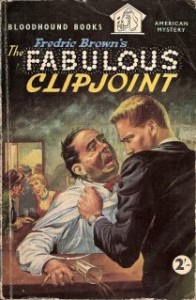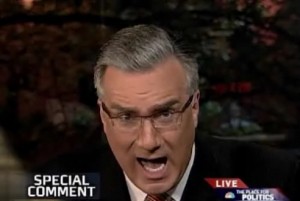 I’m delighted about the departure of Keith Olberman from MSNBC.
I’m delighted about the departure of Keith Olberman from MSNBC.
Not because of his liberal views. There’s room for that on TV, and should be. After all, we’ve got a whole network devoted exclusively to conservative views. If MSNBC wants to commit their evening line-up to a weak counter-balance to FoxNews, that’s fine. There’s an audience for that.
And not because Olberman lacks ability. The guy is extremely talented. “Countdown” showed a lot of creativity. As a writer, I’ve always admired Olberman’s dexterity as a wordsmith; he could really turn a phrase, and knew how to do it with humor, which isn’t as easy as you think. He always seemed, to me, quite bright, though without the political background which provides knowledge and insight, which you find with the likes of Joe Scarborough, Britt Hume, and Chris Matthews.
In that way, Olberman was akin to Glenn Beck. Beck spent most of his career as a morning shock jock, and only gained an interest in politics when his Top 40-DJ career was waning and he realized he needed a new gig; talk radio was just then taking off, and he decided that’s where his future lay. Olberman got his start in sports, where he became a rock star of sorts with Dan Patrick on SportsCenter. But in turning to political punditry, he’s had to learn on the job. His lack of depth, like Beck’s, is apparent. Though Olberman avoids the wild-eyed rantings of Beck.
No, the reason I bid a happy adieu to Olberman has to do with character issues. His smugness. Inflated ego. Pomposity. Arrogance. Sense of self-importance. His inner diva.
In 2008, I read a New Yorker profile on Olberman called “One Angry Man.” As I’ve written before, nobody does profiles as well as the New Yorker. In this profile, Olberman’s arrogance and diva nature shone through, and I remember thinking, “This guy will someday implode.” To me, it was just a matter of time before he and MSNBC reached an unhappy parting. (I predict the same meltdown will happen with Glenn Beck, eventually.)
I’ve read for years about how the mainstay NBC news personalities disliked Olberman (and MSNBC’s nighttime line-up in general), because of the overt partisanship. People like Brian Williams and Tom Brokaw felt that Olberman’s blatant liberalism unfairly tarnished the image of the NBC news division, and I agree. Williams, Brokaw, and the other NBC mainstream journalists kept their distance from Olberman.
Sean Hannity recently interviewed Sarah Palin. That’s like Ken interviewing Barbie. Totally softball stuff. Likewise, I remember, during the presidential campaign, when Olberman landed an interview with Barack Obama. Olberman slobbered all over Obama, trying to be chummy and not ask anything confrontative. It was pathetic, and Obama seemed embarrassed by it. There are only scraps of journalist in Olberman.
This partisanship is why I despise both the MSNBC nighttime programs and the entirety of FoxNews. It’s not journalism. And it’s not truth. When your focus is to tear down the other side–whether it’s the Republicans or the Democrats–and to never say anything good about the other, then you’re not interested in truth. You’re just a puppet, a spouter of talking points. FoxNews no longer makes any pretense about being an objective news organization. MSNBC wants to have it both ways. Both networks know the audience they are trying to reach–the choirs they preach to, the people who care less about light than about having their preconceived views affirmed. And that’s not me. I’m in nobody’s choir.
As with Bill O’Reilly and others, there have been stories of Olberman being a diva around his staff. That always turns me off.
Speaking of O’Reilly: Olberman regularly attacked him, often placing him among that day’s candidates for “Worst Person in the World.” O’Reilly, instead of responding to Olberman, smartly went above him to attack General Electric, the parent company. O’Reilly found many excuses to unfairly demonize GE. This didn’t please GE.
I suspect that Comcast, the new parent company, was not excited about becoming O’Reilly’s new target of derision. If O’Reilly told viewers to cancel their Comcast subscription and switch to another carrier, tens of thousands of them would mindlessly obey.
During the Bush years, I grew to like Olberman. He was speaking about things which were a deep concern to me, particularly in regard to the wars and torture. But increasingly, he became shrill, and his sense of self-importance clouded everything. Then one night he ended an otherwise okay “Special Comment” piece by saying, “Mr. Bush: Shut the hell up.”
That’s when he totally lost me. That was way, way over my line.
Olberman was definitely good for MSNBC. During his eight years as “Countdown” host, he did what Phil Donahue, Alan Keyes, and a whole bunch of other bigger names couldn’t: he created an audience for the MSNBC evening shows, and he did it on talent alone (being an unknown, that’s all he had). So kudos for that.
But his ego did him in. And yet another unhappy parting–an Olberman trademark–occurred. An ESPN executive once said of Olberman’s departure, “He didn’t burn bridges here. He napalmed them.” I’m sure that’s the case once again.
Where will Olberman turn up next? Beats me. Probably on radio. I don’t see any TV network making a place for him.
Interestingly, Olberman’s TV spot is being filled by Lawrence O’Donnell, whose ego rivals Olberman’s. He lacks Olberman’s talent, but does bring political depth. But I suspect he’ll self-implode, too. As will Ed Schultz, who is taking O’Donnell’s previous spot. Chris Matthews and Rachel Maddow are the only sane ones in the line-up. In my view. And Matthews is the only one I care to watch.
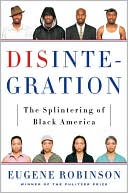 The New York Times Book Review had a piece on Eugene Robinson’s new book “Distintegration: the Splintering of Black America.” The review noted how Robinson, a Pulitzer Prize winning journalist for the Washington Post–and an African American–divides the African American population into four groups. Coming from a first-class thinker like Robinson, I found this categorizing very interesting.
The New York Times Book Review had a piece on Eugene Robinson’s new book “Distintegration: the Splintering of Black America.” The review noted how Robinson, a Pulitzer Prize winning journalist for the Washington Post–and an African American–divides the African American population into four groups. Coming from a first-class thinker like Robinson, I found this categorizing very interesting.

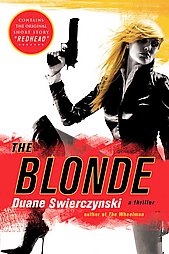 Duane Swierczynski has quite an imagination. His books are unusual, and unpredictable. Such was the case with “The Blonde” (2007).
Duane Swierczynski has quite an imagination. His books are unusual, and unpredictable. Such was the case with “The Blonde” (2007).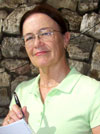
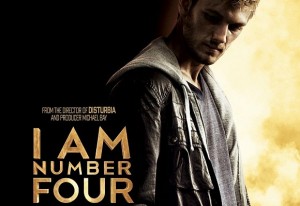
 I’m delighted about the departure of Keith Olberman from MSNBC.
I’m delighted about the departure of Keith Olberman from MSNBC.